VISUAL ART: A High Culture Embrace of Pop, “Hot Ink”
Britt Aamodt offers a glimpse into a rich, whirlwind tour through our state's wealth of cartoon artists in what looks to be one of the MMAA's last exhibitions for a while, "Hot Ink: Comic Art in Minnesota."
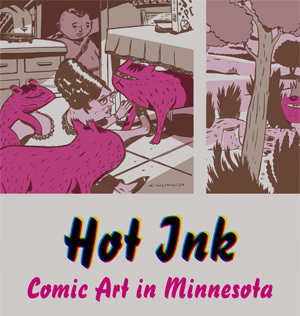
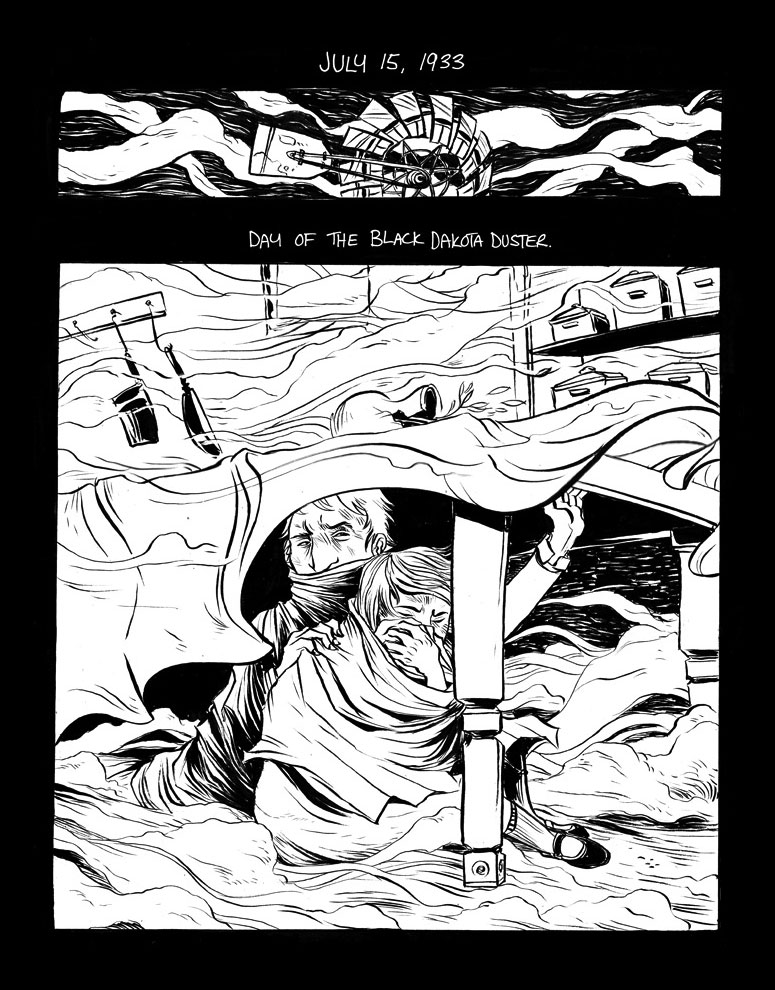

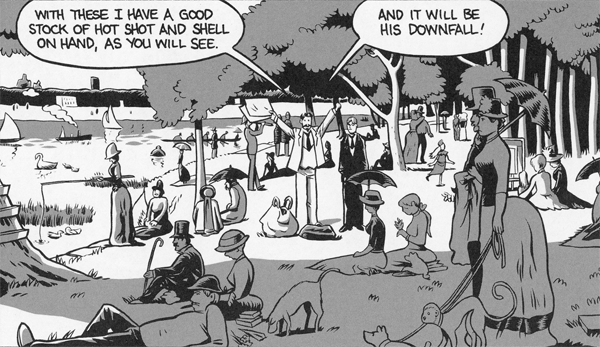

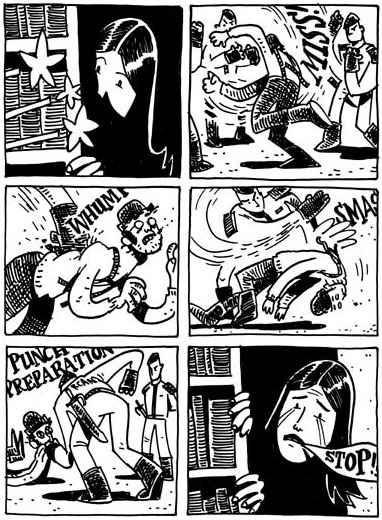
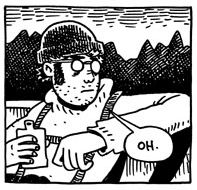
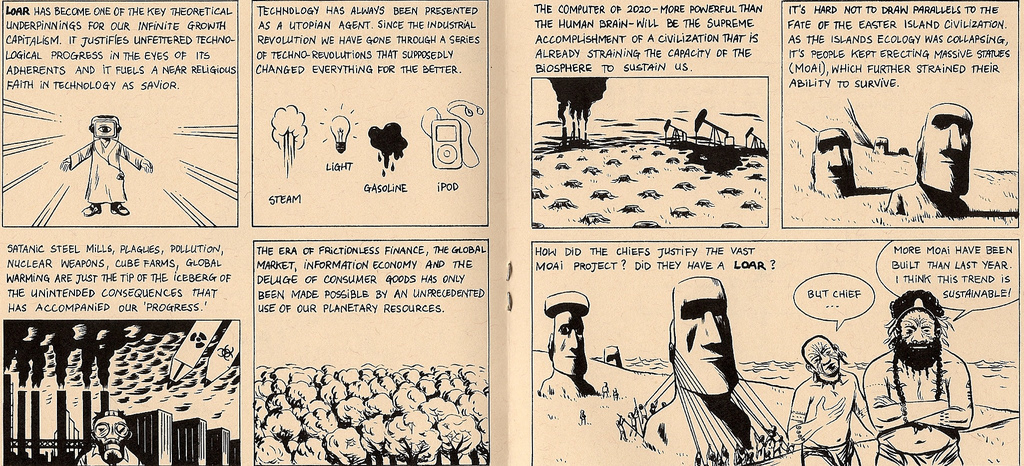
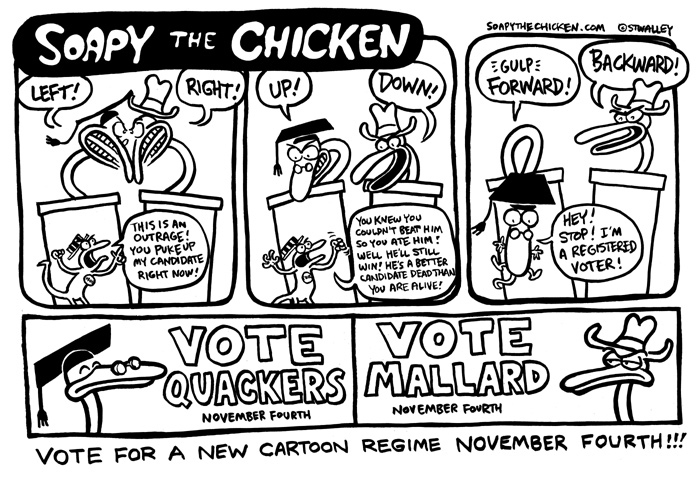
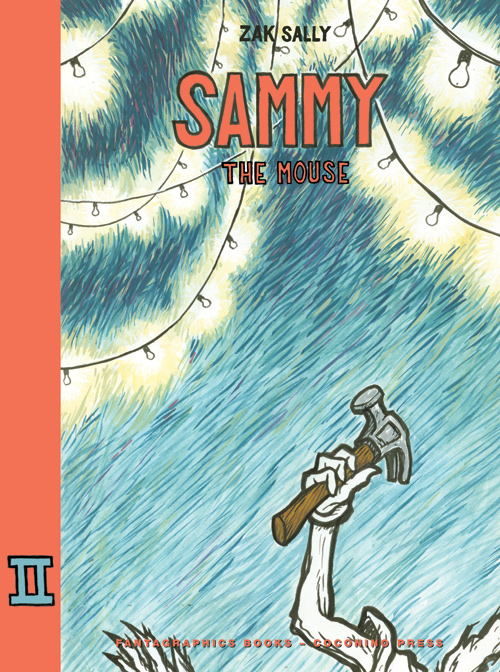
SUDDENLY, COMIC BOOKS ARE EVERYWHERE; and not only comic books but graphic novels, strips, web comics, minicomics, cartoonist sketch diaries lovingly scanned and uploaded to the net, books on comic books, movies based on comic books, countless articles (including this one). You get the idea. A proverbial flood of attention is being lavished on an art form that, for far too long, has languished in the sock drawer of American lowbrow entertainments, along with the Hustler magazine and cigarettes you bought at recess and didn’t want Mom to find. Perhaps it’s in this spirit of full disclosure that the Minnesota Museum of American Art presents a new exhibition, Hot Ink: Comic Art in Minnesota: “Hey, Ma, I’ve got a drawer full of comics, and I like ’em.”
Running through January 4, 2009, the MMAA exhibit, co-curated by Theresa Downing and Andrew DeVore, throws the door wide open on the Minnesota cartoonist scene. Art from sixteen Minnesota cartoonists, along with inked panels by the creative team behind Big Time Attic, is tacked to the walls like concert bills and “work from home” notices you see on street corners. The overall effect could have been merely tatty, but it’s brilliantly conceived. Display cases exhibit the cartoonists’ sketchbooks, published graphic novels, and book art pieceslike King Mini‘s magical minicomics that, taking a cue from Art Spiegelman‘s ’80s comics magazine Raw, offer something to see, hold in your hands, and experience with the imagination.
Because comics are meant to be leafed and handled, Downing and DeVore have provided couches, chairs, and a coffee table heaped with the cartoonists’ graphic novels and minicomics. But remember: this isn’t your living room. This is a museum, that longtime stronghold of the Art Establishment, which over the past decade has gradually permitted some of its exhibitions to take the “high” out of culture and insert a “pop.” (New York City has devoted an entire museum to comic artthe Museum of Comic and Cartoon Art.)
Cartooning, the quintessential pop-culture medium, has at last arrived, and at a time when more cartoon art is being created by more artists than at any other time in the form’s history. Curator Theresa Downing, in her introduction to the exhibit, links the proliferation of comic art in Minnesota to “developments in popular culture and DIY printing technology” that have seen traditional comics morph “from stories about superheroes and villains, to graphic novels addressing personal worldviews.” Some examples from Hot Ink include Lars Martinson‘s graphic novel Tonoharu: Part One, a lush self-published effort based on Martinson’s experiences as an English teacher in Japan; then there’s Zak Sally‘s Sammy the Mouse, a dreamlike tale following Sammy and his animal friends as they plod through a night world in search of boozy adventures.
_________________________________________________
Cartooning, the quintessential pop-culture medium, has at last arrived, and at a time when more cartoon art is being created by more artists than at any other time in the form’s history.
_________________________________________________
Each of the sixteen represented artists offers up that uniquely personal vision, whether you’re talking about Minneapolis College of Art and Design instructor Barb Schulz’s collaboration with illustrator Steve Kurth, Hercules, or Will Dinski‘s sophisticated, measured pages for the numbered series Habitual Entertainment. Dinski’s latest installment, “Beautiful, Cool and Irreplaceable” is a high-society romp, treating those favorite themes of soap opera fans: plastic surgery, celebrity, and infidelity.
Dinski is a graduate of MCAD, as are many of Hot Ink‘s artists: Reynold Kissling, Tyler Page, Evan G. Palmer, Britt Sabo, and Tim Sievert. King Mini (Vince Stall), Barb Schulz, and Zak Sally have all taught or continue to teach at MCAD, which, as one of the few institutions granting degrees in cartoon art, has played a significant role in the growth of Minnesota’s cartoonist community. A criticism often leveled at university art programs is the uniformity of the student work. Rather than creativity, the programs inculcate a “house style.” To judge by the art on display at Hot Ink, that doesn’t seem to be the case with MCAD’s cartoon art graduates.
Tim Sievert’s That Salty Air (Top Shelf Productions, 2008), possesses the soft-spoken grandeur of Japanese woodblock prints. Another artist, Britt Sabo mines the Great Depression for storylines that thread sinuously over an American gothic landscape. An illustration studio located in Northeast Minneapolis, Big Time Attic has landed on the ground floor of a rising tide in historical and educational graphic novels, publishing a genetics text in early 2009 and a space-race historyT-Minus: The Race to the Moonforthcoming. Bone Sharps, Cowboys, and Thunder Lizards (2008), with writer Jim Ottaviani, traces the story of intrigue and adventure behind the origins of American paleontology.
Big Time Attic comprises cartoonists Zander and Kevin Cannon, who also fall into Downing’s category of small press and DIY publishers. Hot Ink includes pages from Kevin’s graphic novel Far Arden, the madcap adventures of Arctic pirate Armitage Shanks, originally published online, now picked up by Top Shelf Productions for a spring 2009 release; also on view is Zander’s The Replacement God, a richly illustrated fantasy published by Slave Labor Graphics.
Many, if not all of the artists represented by Hot Ink, have dabbled in online publishing, either to serialize their comics as web comics (Steven Stwalley’s artfully designed Soapy the Chicken), to blog about their comics (Tim Sievert), or to provide an online portfolio of work (Andy Singer, Tom Kaczynski, and Tyler Page). Andy Singer is among Minnesota’s best-known cartoonists. His strips, with their strong, clean lines and idiosyncratic vision, have been syndicated nationally.
The point of the Hot Ink exhibition, much like that of this article, is to merely point out the wealth of talented Minnesota cartoonists, while underscoring the idea that this is only a sample. Hot Ink hasn’t even tapped the superhero crowd (Terry Beatty, Dan Jurgens, Patrick Gleason, Christopher Jones, and Gordon Purcell), or the mainstream non-superhero coterie (Peter Gross and Ryan Kelly), or the groundswell of minicomics and web comics creators represented by the Minnesota-grown International Cartoonist Conspiracy. Maybe Hot Ink is just your Minnesota cartoonist primer, but it’s a darn good one.
About the author: Britt Aamodt is a freelance writer living in Minneapolis. She loves the arts, meeting new people, and grocery shopping.
What: Hot Ink: Comic Art in Minnesota
Where: Minnesota Museum of American Art, Saint Paul, MN
When: The exhibition runs through January 4, 2009, at which time the MMAA will, sadly, close until further notice
Admission is FREE and open to the public